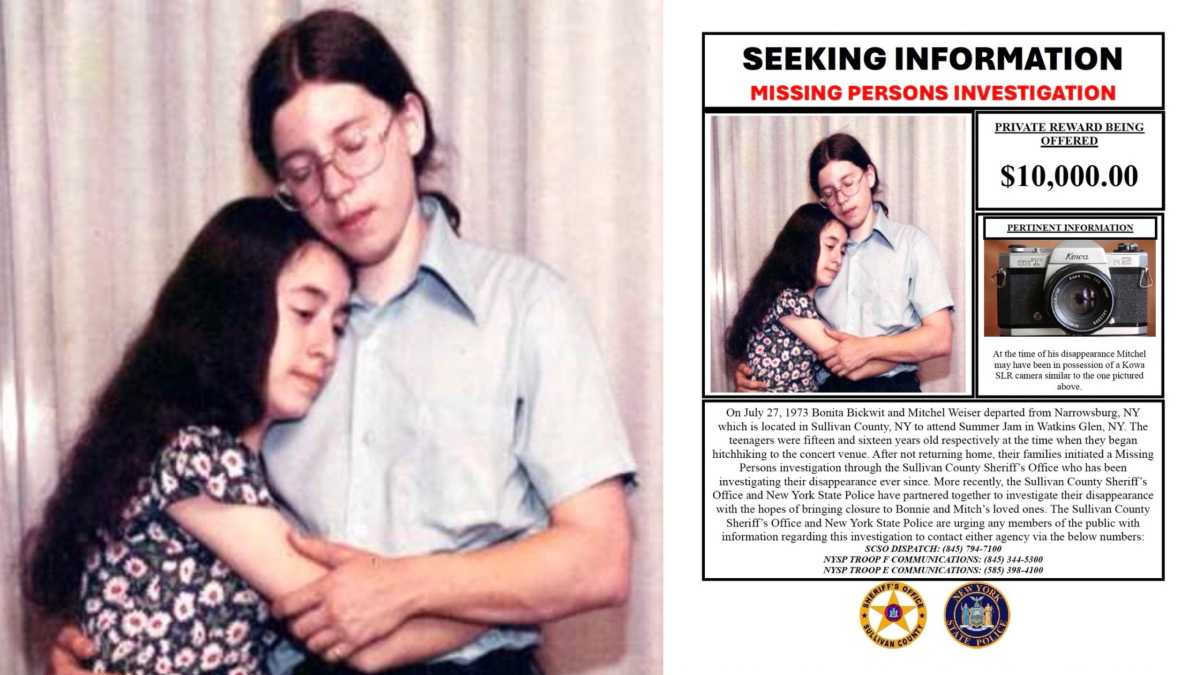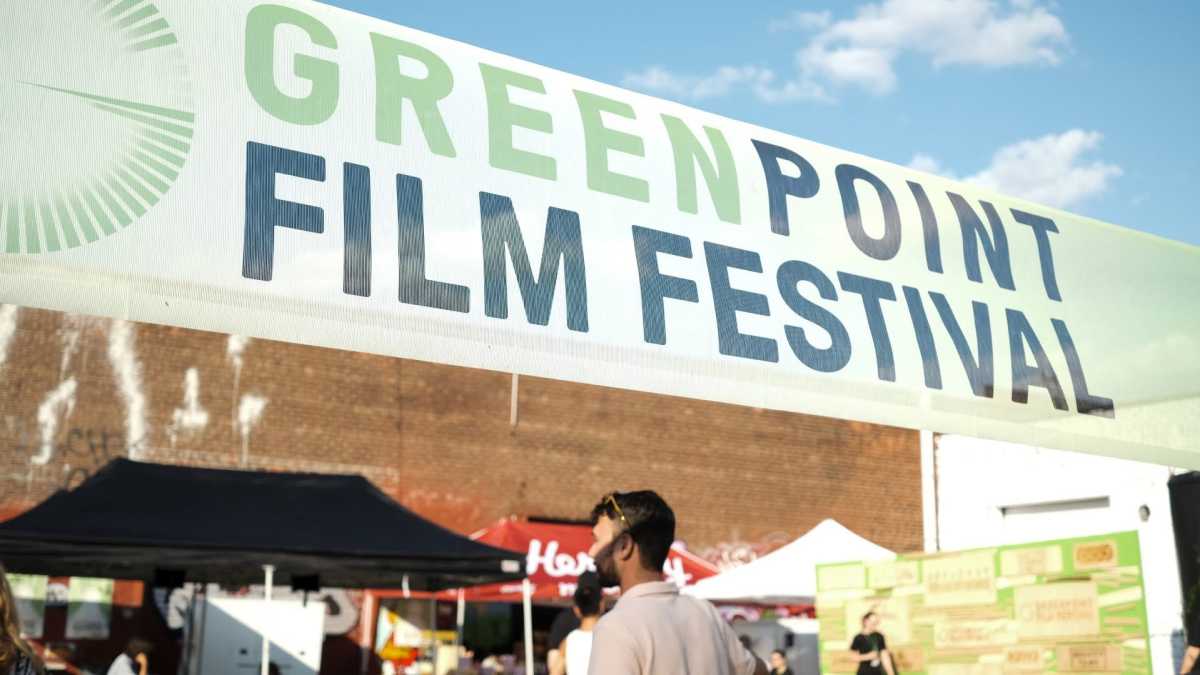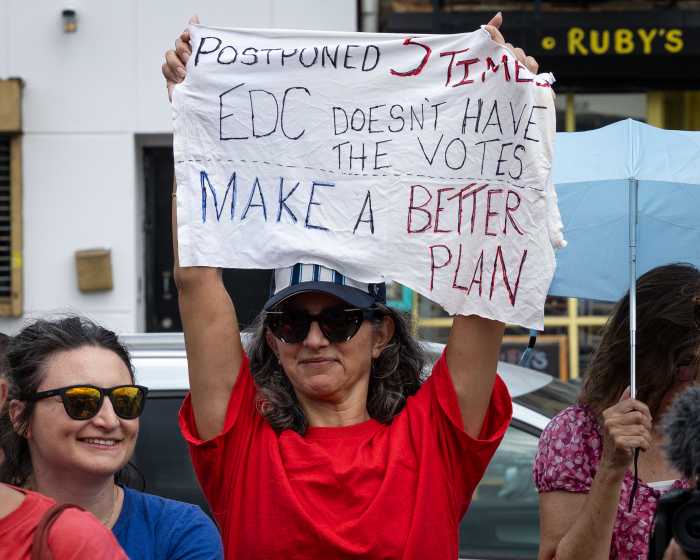Boycotts Villager because of Koch
To The Editor:
I did tons of petitions for Ed Koch in 1977 when he was running for mayor, not easy here in Bella country (Chelsea). I also ran his inaugural party at the Public Theater on Jan. 1, 1978 — gathering donations of food, beverages and entertainment — it was a very big job.
Now I regret all the above. If his friendship with Al D’Amato, one of the sleaziest politicians who ever lived, and Cardinal O’Connor, who probably sat on abuse cases during his tenure, wasn’t enough, Koch had to go ahead and work for Bush and Co., the scariest bunch ever to sit in power here — Nixon and Co. run a close second, Reagan and Co. a close third — in this past election after they stole the last one.
I am sure his reason for this is Bush’s support for Israel over the best interests of the U.S.A. I’m sure he is probably coaxing the president to “nuke” Iran, next. Koch ought to move to Israel if he supports it more than this country which has been so good to him. But that would take courage. Don’t hold your breath, anyone. And he really ought to leave the Democratic Party.
Considering he will probably never do either, I can distance myself from him and anyone who supports him. I am therefore not renewing my Villager subscription. I don’t care about his vapid movie reviews. No one reads them after the first time. But this paper is as hypocritical as he is if you have him in your employ.
Carolynn R. Meinhardt
Puts park project in perspective
To The Editor:
With the controversy about the plans for the Washington Sq. Park renovation, it was good to read Carol Greitzer’s letter in your April 20 edition (“Washington Sq. Park: Déjà vu”). She asks, “What happened to our institutional memory?” In the early ’60s, the Greenwich Village Planning Board 2 appointed a committee of local architects because the official Parks Department plan had been rejected by the community. Moses’ traffic scheme had been defeated. The community’s main concern was to get rid of the buses using the fountain as a turnaround and to restore the park to its walkers and users.
The Architects’ Committee’s redesign was modest. The budget was low — at the start it was less than $1 million. Care was taken to keep the park’s midcentury Victorian character. Olmstead’s Bethesda plaza and fountain at the edge of the lake in Central Park was seen as a sister space. The original paths and basic design remained the same. We sought to blend the old with the new to reflect the character and history of the community as well as its needs. We added a playground, a bocce court and small, intimate sitting areas, newly designed street furniture and a permanent stage. We celebrated the central fountain by creating a theater-in-the-round effect.
Whatever the merits of this 1960s design, there was one serious mistake. No provision was made for proper maintenance and upkeep of the new design elements. Parks provided Washington Sq. Park the same minimal (and unimaginative) maintenance it provided to its standard-issue cookie-cutter parks. Thus, the lovely, curved wooden benches that were constructed to fit on top of the curved concrete bases at the northwest and southeast entrances were never repainted. When they rotted they were simply taken out. The steps down to the fountain, which were made with cast concrete — with a generous budget they would have been made out of stone — were sloppily patched with asphalt making them ugly and hazardous. The three play mounds and the adventure playground for older children in the southwest corner of the park were similarly allowed to fall into disrepair — the wooden equipment was removed when it too began to rot. The play mounds, once green, were patched with unsightly black asphalt. Most important, the newly planted large trees — Sophora Japonica — did not get the requisite care: their subsoil and root condition were not checked regularly by an expert, leaving them vulnerable.
Perhaps there is not a total “loss of institutional memory” and this may be an opportunity for Parks to learn from its mistakes. Greitzer quotes the author of the “AIA Guide to New York City” at the time that “this community consultation should be a model for all park development in the city.” A community/Parks partnership can still be forged and a community oversight committee formed with a budget for appropriate maintenance. The $16 million price tag for the current redesign plan seems wasteful. The community is clearly unhappy with several key elements of the design: the fence, the leveling of the park — which will eliminate the performance stage and the theater-in-the-round effect of the fountain area — the alignment of the fountain with the arch, the destruction of the play mounds, etc. A park is a living thing. The key to the success of any park is active neighborly interest and attention. It makes more sense to invest half of the proposed $16 million in a “maintenance endowment” and use the rest to make much-needed repairs and improvements. Rather than insisting it knows best (a la Robert Moses), Parks should work with the community. Community consultation and foresight — informed by hindsight — should be the model for the Parks Department this time around.
Robert B. Nichols
Nichols was the lead architect for the 1960s renovation of Washington Sq. Park. He was appointed by the Greenwich Village Planning Board’s chairperson, Tony Dapolito. He currently lives in Thetford Hill, Vt.
Drivers getting away with murder
To The Editor:
Re “Cyclist’s death is a reminder of danger on the street” (news article, May 18):
I read your article on the latest bicyclist killed by a careless driver and the New York Police Department’s usual response of not enforcing the law by letting killers get off without so much as a traffic ticket and I wasn’t sure whether to cry or to scream.
As a female bicyclist myself, I am nearly killed several times a day by arrogant drivers who think they can break all the laws because they’re immune in their steel cages. And I’m sick of hearing how the police — who appear to have a conflict of interest since they drive automobiles pretty recklessly themselves! — keep saying no crime happened! If no crime happened, then pedestrians and bicyclists wouldn’t be dead or maimed!
If there’s a person bleeding in the road, then a crime automatically occurred, because you can’t “accidentally” hit a person (unless the victim is drunk or suicidal)! We’ve all seen with our own eyes how often drivers don’t yield to pedestrians, and cabbies who drive like lunatics. By contrast, I’ve never seen a bicyclist drive directly into the path of a car or truck!
Likewise, when an auto kills people who are legally in the crosswalk, cops say “the driver didn’t see them” and don’t ticket them, which is madness and nonsense! The only way you can’t see a pedestrian in the crosswalk as you’re turning is if you’re not paying attention! (I also drive a car.) The N.Y.P.D. and Mayor Bloomberg must be held accountable and if our out-to-lunch mayor doesn’t ride a bike through New York City once in a while, it proves his complete indifference to the manslaughter of innocent people.
Ride a mile in our shoes, Mr. Mayor, and tell us the roads (which you are in charge of ) aren’t anarchy.
Jessica Delfino All must drive safely
To The Editor:
I am responding to “Cyclist’s death is a reminder of the danger on the streets” (news article, May 18) and to Jonathan Keller’s letter to the editor, “Worries about daughter biking” (May 18):
I am working with Sergeant Lagoa at the Ninth Police Precinct to present a public talk on highway and bicycle safety, in an effort to reduce the bloodshed, mayhem and carnage on our streets and sidewalks. I have been researching traffic safety for the past four years and am myself an avid bicyclist for many decades. I was almost killed by a motorist “dooring” some 40 years ago. Only recently have I begun to heal the mental and emotional shock and trauma of that accident.
According to information provided to me by Sergeant Lagoa, who is the traffic safety officer at the Ninth Precinct, this unfortunate fatality occurred when the cyclist was riding against traffic in a very dark area without a helmet or lights. The garbage truck was turning and the driver had no vision of the cyclist and had absolutely no knowledge that he had hit her. Garbage trucks, buses and trucks have large blind spots and the drivers often cannot see a pedestrian or cyclist. This doesn’t mean that in other situations and events the driver is blameless. It appears that in this individual situation the driver was not at fault.
My research indicates that the number of pedestrians killed in New York City per year is close to 300 and not the 200 indicated in the article. Some 15 or so cyclists are killed per year. As the article indicated, many thousands more are seriously injured annually. The cost to the individuals killed or injured, the burden on New York City’s medical system and to society is enormous. And yet our society continues to casually accept the mayhem and carnage and bloodshed year after year.
Alas, as long as motorists speed and are reckless and uncaring, as long as my fellow bicyclists violate basic safety procedures — including speeding — danger and accidents will continue.
Michael Gottlieb
Fair way to pay salaries?
To The Editor:
This summer, there will be seven street fairs held just to raise the salaries of the city employees who work at Community Board 1 (Lower Manhattan, Financial District, Tribeca and South St. Seaport). Is it really a good practice to close down public streets and to inconvenience our local shopkeepers and residents so that the board’s employees can have a larger salary?
I fought for over 10 years to expose this practice and to get the full board to disapprove these C.B. 1 street fairs. Well, the full board did finally get a chance to vote on this issue, but only two members voted against the practice. The Conflicts of Interest Board finally ruled that by distancing the approval process from the recipients of the funds the practice is legal, so my efforts were not in vain. But even though the process is now deemed legal, is it in the best interest for the community?
If this is such a good idea, why not have street fairs to raise the salaries of all of our teachers, police and firefighters? Don’t these city employees deserve raises, too? If the community board wants to give its staff more money than the city budget offers, then it should do it without closing down public streets for private gain. Having street fairs for genuine nonprofit community organizations is one thing, but this practice is really absurd.
Rick Landman
Landman is a member of Community Board 1
Telling words tell story
To The Editor:
Jim Smith’s own words, “Expect no help from me” (“Film Flap,” Scoopy’s Notebook, May 25), sum up succinctly why many of us no longer bring our complaints to the community board.
Cathy Glasson
Complaints dog patrol
To The Editor:
Re “Park patrol gets touchy; nipple fondling is nipped” (news article, May 25):
Reporter Duncan Osborne’s article is correct in its criticism of the Hudson River Park Park Enforcement Patrol officers. These “officers” refused to help me last summer for over an hour when my dog collapsed one summer night on the walkway/bike path near Charles St., even though three cyclists rode up and told them there was an emergency and I needed help. A fourth cyclist insisted they come and help me bring the dog a few blocks to Bethune St. where my car was parked so I could rush her to the vet. By the time they arrived, my dog Espressa had died. Maybe they were too busy monitoring what gay couples were doing or not doing on the pier. My neighbors helped me bring her body to my car, and I never received an acknowledgement or apology from the Hudson Park Trust, although I reported the incident.
Dr. Jacqueline Taylor Basker Pet-related PEP incident
To The Editor:
Most every morning for years now I have walked my dog in the Hudson River Park. I enter on 11th St., hug the railing on the water’s edge, turn onto the Perry St. finger pier, go around its perimeter, then back to 11th St. on the lawn edge. Ali my dog has trained me well.
Anyway, on Wednesday, May 25, I had a infuriating exchange with the PEP officers. As I exited the finger pier I saw their car on the bike path. I was halfway to the 11th St. entrance when their car pulls up and a blond almost albino officer says, “You know you’re not allowed to let your dog walk on the lawns.” I said, “What are you freakin’ nuts? I’ve lived here since the park was built; you think I don’t know the rules?” A tad too aggressive I suppose, but early in my day I’m not in a very diplomatic mode.
At that point, both PEP officers get out of their car, one adjusting his nightstick and the other pulling out a walkie talkie…. I’m figuring I’m in for it now.
Then one says, “What about when you were walking on the finger pier?” Now I know they’re grabbing for straws. Remember, their patrol car was on the bike path and I saw no binoculars in the car.
Luckily, I had a conversation with another dog owner who was still on the finger pier, so I said, “Come on, let’s go ask that guy what he saw.” By that time they realized I would not be bullied and there was a witness, so they backed down and got back in their car and I walked off.
Now, I ask you, why would they invent and falsely charge me and feel so free to accuse me? Are the PEP officers operating in a police state that allows them to feel free to intimidate citizens? Is it an empowerment given them by their superiors or the general police state atmosphere in the country? Let’s face it, I can’t be the only one.
I had heard about harassment Uptown in Riverside Park — well, it’s here now. Someone, be it the Hudson River Park Trust or our community board or Parks Department, had better tell these armed (nightsticks, fortunately, not guns) goons to cool their jets.
Barry Weiser
























